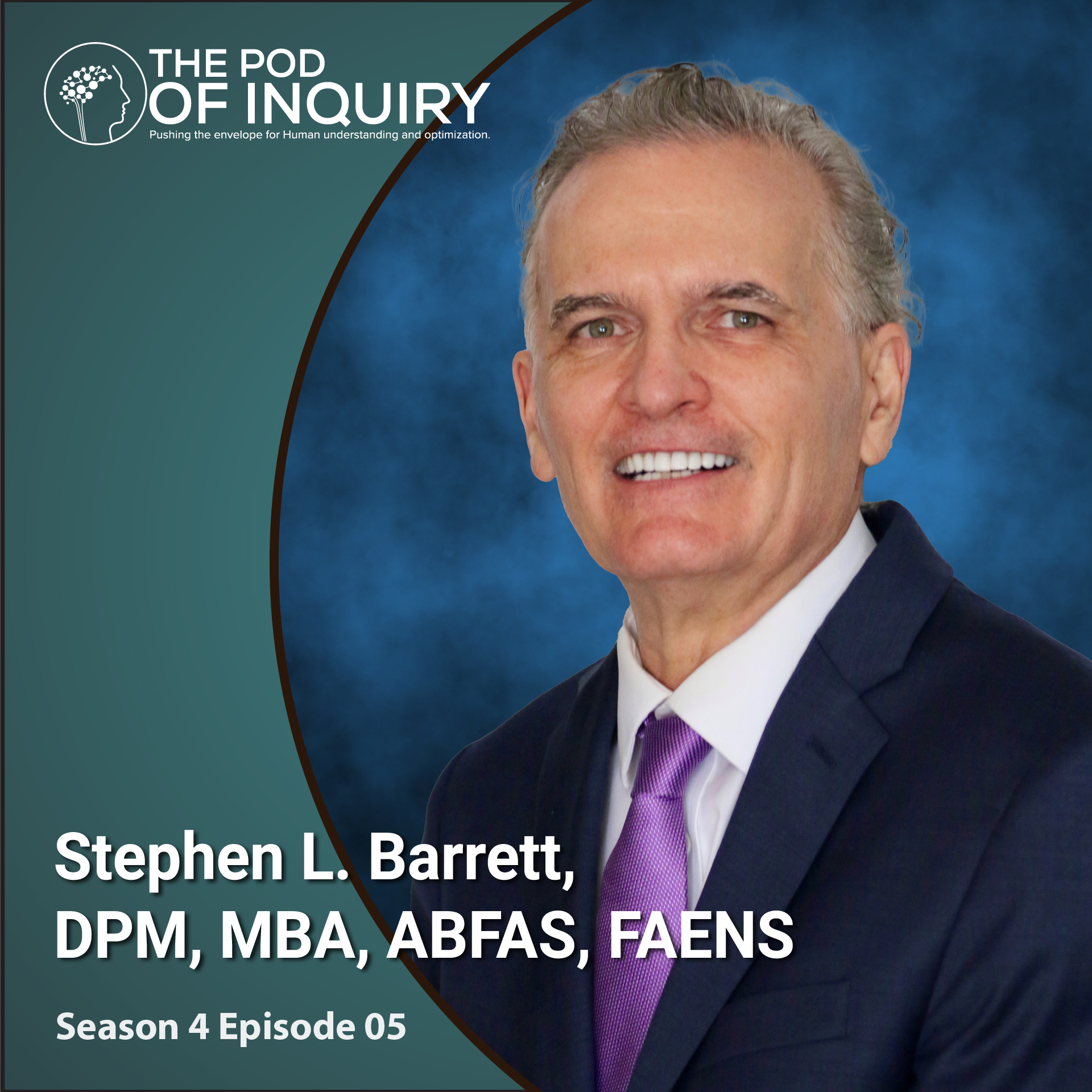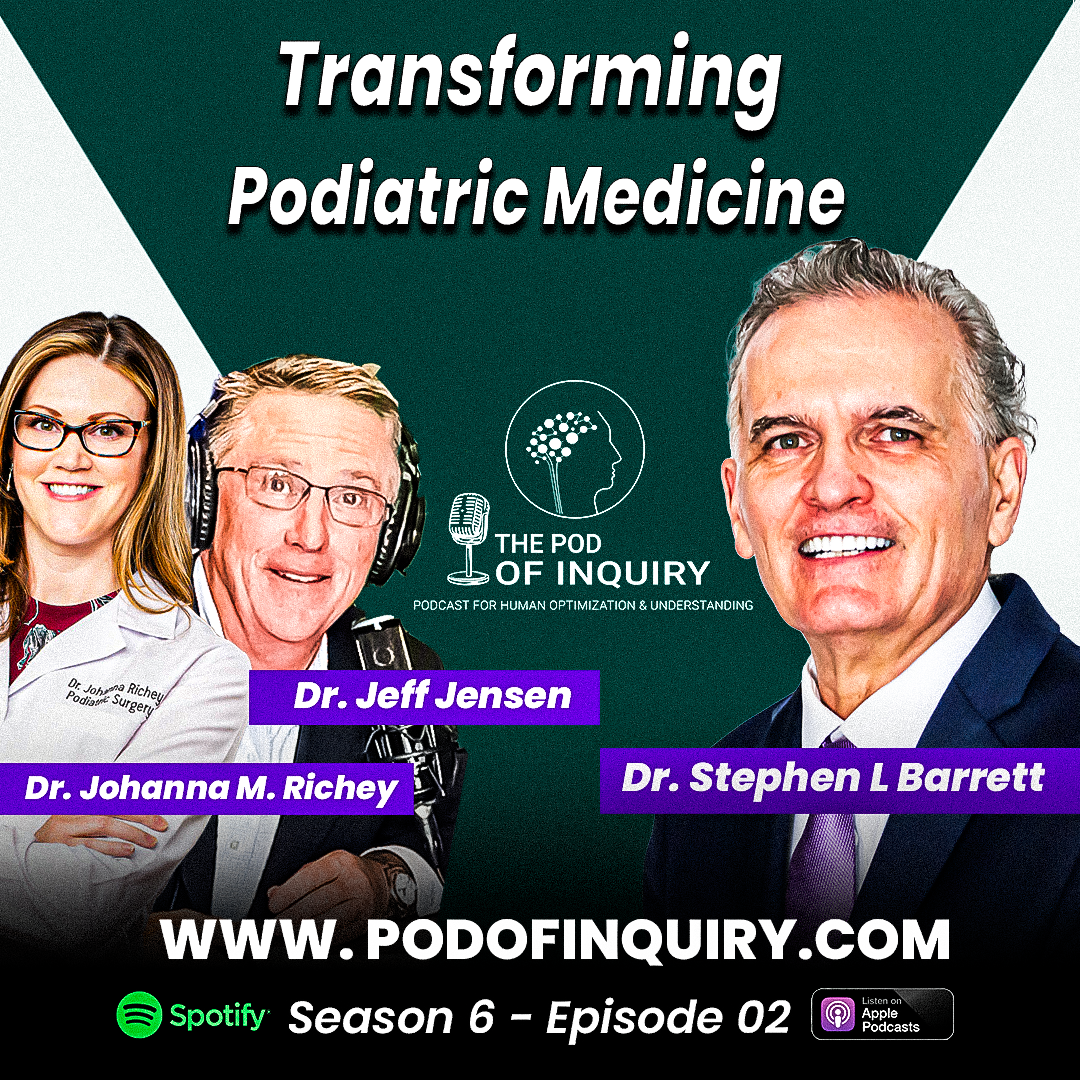The Pod of Inquiry is excited to share a special episode featuring Dr. Stephen Barrett’s lecture to the Izmir Neurosurgery group in Turkey on Tarsal Tunnel Syndrome and the Phoenix Sign.
In this episode, Dr. Barrett discusses:
Tarsal Tunnel Syndrome: Causes, symptoms, and diagnosis of this common foot condition.
The Phoenix Sign: A new diagnostic tool developed by Dr. Barrett and its potential impact on treatment.
Clinical insights and practical applications: Dr. Barrett shares his expertise with this group of neurosurgeons.

Watch The Podcast for Podiatrists
Listen to The Podcast for Podiatrists
Also available on
Show Notes from this episode
Podiatrist and surgeon Stephen Barrett, DPM, MBA, ABPS, FAENS, brings decades of experience in foot and nerve care to US Neuropathy Centers in Marietta and Atlanta, Georgia. He is a highly-regarded expert in heel pain, pain management, peripheral nerve surgery, and diabetic peripheral neuropathy. He is proud to provide the best health care to his patients. Dr. Barrett earned his medical degree from the Dr. William M. Scholl College of Podiatric Medicine at Rosalind Franklin University in North Chicago, Illinois and completed his residency at UTMB/Danforth Hospital in Houston.
A pioneer in his field, Dr. Barrett was the first physician to invent and utilize minimally invasive endoscopic surgery to treat heel pain. He also performed the first diabetic peripheral nerve decompression in Spain, which was observed in Barcelona on closed-circuit television by 74 of Europe’s top surgeons, neurologists, and endocrinologists.
Dr. Barrett holds 5 patents; two for developing innovative endoscopic procedures — the endoscopic plantar fasciotomy (EPF) and endoscopic decompression of the intermetatarsal nerve (EDIN). He believes in preparing the next generation and has trained over 6,000 surgeons around the world to perform these procedures. The seminal textbook for orthopedic surgery, “Campbell’s Operative Orthopedics,” also includes his procedures. Dr. Barrett is also the author of two textbooks, "Diagnostic Ultrasound of the Foot and Ankle", published in 2013, and “Practical Pain Management for the Lower Extremity Surgeon,” published in 2015. In addition to his textbooks, Dr. Barrett has published more than 50 articles in peer-reviewed medical journals, chapters included in other medical textbooks, and co-authored a textbook on the interpretation of neurosensory testing. He is also a contributing editor for the Journal of the American Pediatric Medical Association and on the editorial board for Podiatry Today and Practical Pain Management.
Dr. Barrett is board-certified by the American Board of Foot and Ankle Surgery and the American Board of Podiatric Medicine. He formerly served as the president of the Association of Extremity Nerve Surgeons, where he was awarded the prestigious Jules Tinel MD Award in 2010. He now serves as the Chairman of the board of trustees for the Association of Extremity Nerve Surgeons. Dr. Barrett earned his MBA from Texas Tech University in Lubbock, Texas in 2005 with a specialization in healthcare management.
Dr. Barrett 01:06 Introduction of episode
Dr. Barrett 08:18 Biomechanics and Tarsal Tunnel Syndrome
You have to think about that is tarsal tunnel syndrome is a symptom because you have all of these other things going on. So, it could be both a symptom which I think it is and a syndrome. You always want to treat a symptom when you can know what the pathogenesis is for that patient. So how do we diagnose it? Well, very, very important with any neurological conditions, just taking some time to listen to what the patient will tell you. So the history of present illness A lot of times can give you some great insight into what's really going on, for example, they can't tolerate a shoe that has any insert in it or any art support Well, empirically, you would think that, because there's more pressure in the arch, and that's where these nerves are trying to go through in the porta pedis, and that would make a lot of sense. So, when you listen to them, and they'll tell you these things, it adds up. The other two clinical signs that we look for is a Tinel’s sign, and a provocation sign, I'm going to show you a video in just a second that will delineate that a little bit more. And then we also want to think about what else is going on? Do they have metabolic syndrome, we know that diabetic peripheral neuropathy causes intraneural edema, because of the way the polyol pathway is affected. And then we can ultimately figure out the differences in the nuances of a particular tarsal tunnel syndrome with peripheral nerve blocks. And we'll talk about that just a little bit more additional things that can be done to help you with your diagnosis is obviously electrodiagnostic studies, we've kind of found that nerve conduction velocity and EMGs in the lower extremity for this are usually about 50% of the time really don't give us anything. And then the other test that we use is called a PSSD test that stands for pressure specified sensory device. It's simply a computerized interpretation of one point and two-point discrimination. And it's a very good way to figure things out much more eloquent than a Semmes-Weinstein monofilament. MRIs are useful if we think there is a space occupying lesion. However, in our practice, we find diagnostic ultrasound much better, because with diagnostic ultrasound, what we're able to do is eliminate or confirm the possibility of a space occupying lesion very easily. The second thing is that we can put it in the vascular color flow mode, and we can track down the medial plantar artery and the lateral plantar artery. And we're able to see a significant in very tight tarsal tunnels that are very symptomatic.
Dr. Barrett 17:25 Tunnel Pressures and Constriction
Dr. Barrett 23:21 Discusses Common Co morbidities with TTS
Dr. Barrett 32:16 Why do you inject the tarsal tunnel with steroids????
Dr. Barrett 42:20 Explains the technique in Surgical Decompression of TTS
Dr. Barrett 51:04 The Phoenix Sign




